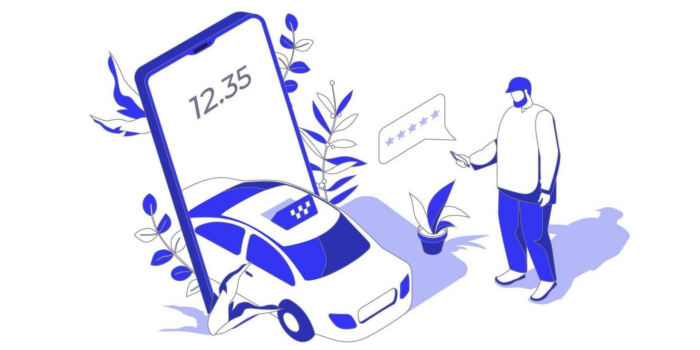Not more than 3 years ago, the world witnessed one of the biggest disruptions of the 21st century – the COVID-19 pandemic. While the people were locked inside their rooms, the world trade had to continue. And that gave rise to a new era of mobile payments. In fact, the mobile payments transaction market touched a whopping $1.7 billion in 2021, with a 27% annual increase.
The change is not just limited to numbers, the landscape has shifted beyond measure in the past couple years and is leading a full-fledged transformation. Groundbreaking technological integrations, rising user demand and massive funding the mobile payments apps is making it a reality. This blog explores the intricacies of top trends encompassing mobile payments and what the future of mobile payments may hold. Let’s get started.
The Present State of Mobile Payments
Mobile payments are transforming the way we shop, with a few big players leading the way. Platforms like Apple Pay, Google Pay, Samsung Pay, and PayPal, including specialized features like PayPal casino (in the UK), make on-the-go transactions a breeze. These big players enable seamless transactions on the go, leveraging technologies such as near-field communication (NFC), QR codes, and mobile wallets. Consumer adoption of mobile payments has also been steadily increasing, fueled by the proliferation of smartphones and a growing acceptance of digital transactions. While significant in some regions, there’s still room for growth, particularly in developing economies. All in all, the current landscape paints a promising picture of innovation and expansion in mobile payments. Now, we will explore some of the key trends of mobile payments in 2023.
Top Mobile Payment Trends for 2023
- Digital Wallets: The Future of Finance Management
The Covid-19 pandemic has spurred a rapid shift towards digital wallets and mobile payments, making them the preferred method of payment for many. This trend is expected to continue exponentially, with the number of mobile wallets projected to reach 4.8 billion by 2025. This is a significant increase from 2.8 billion in 2020. Additionally, Yahoo Finance predicts that by 2024, over half of all e-commerce payments worldwide will be made through digital wallets.
Developing nations, particularly in Africa, are leading the way in the adoption of mobile wallets. In 2020, out of 310 registered mobile wallets, over half were located in Africa.
- IoT Devices: The Connected Payment Revolution
Smart, interconnected devices are already revolutionizing the very way we make transactions. Statista predicts that by 2030, there will be over 50 billion IoT devices worldwide. These devices, ranging from wearables or smart appliances, have the ability to facilitate seamless payments and work perfectly with mobile apps. A study by Juniper Research forecasts that IoT payments will reach $410 billion by the end of 2023, reflecting the growing integration of payment technology into everyday objects.
- Blockchain: The New Frontier in Security
Blockchain technology, since its inception has been bringing waves to the industry and has substantially improved the security of mobile app payments. Its transparent and immutable nature ensures secure and traceable mobile payments. In fact, as per a report by MarketsandMarkets, the global blockchain market size is expected to grow from $3 billion in 2020 to $39.7 billion by 2025. This growth is driven by the increasing adoption of blockchain in various industries, including finance, where it’s heralded as the new frontier in security.
- Augmented Reality Payments: Shopping in a Virtual World
Augmented Reality (AR) is creating immersive shopping experiences, allowing consumers to visualize products before purchasing. Gartner predicts that by 2022, over 100 million consumers will shop using AR online and in-store. AR mobile payments are an emerging trend, with companies like Apple exploring AR for secure and interactive payment experiences. The global AR market is expected to reach $198 billion by 2025, according to Statista, reflecting the potential of AR in transforming the retail and payment landscape.
- Telecommunications: The Hub for Digital Entertainment Transactions
Telecommunications companies, with more SIM cards than people globally, are becoming the nexus for digital entertainment through Carrier Billing. This payment method positions telecom operators as the central hub for digital convergence, appealing to digital merchants eager to expand. A key strategy in aligning the interests of both parties is bundling, where telecoms leverage their brand, distribution, and billing capabilities. In turn, Over-the-Top (OTT) merchants gain efficient access to a vast customer base. This synergy between telecoms and digital merchants fosters a streamlined digital entertainment experience.
Five Bold Predictions for the Next Decade
- AI-Powered Personalization: Tailored Recommendations and Offers
When it comes to considering the future of mobile payments, AI is set to enable highly personalized experiences. By analyzing user behavior and preferences, AI models can provide tailored recommendations and offers directly through mobile payment apps. Forbes highlights that this personalization will enhance user engagement and loyalty, making mobile payments not just a transaction tool but a personalized shopping assistant.
- Cross-Border Payments: Streamlining International Transfers
In the upcoming years, mobile payments and apps associated with it will revolutionize cross-border transactions, making them quicker and more cost-effective. Sounds far fetched? It’s not. World Bank reports that mobile-based remittances are growing exponentially, especially in developing countries. Thus, our prediction says that the next decade will see mobile platforms leveraging technologies like blockchain to facilitate seamless international transfers, connecting people and businesses across borders.
- Buy Now, Pay Later (BNPL): Flexible Installment Plans
The BNPL trend is set to expand within mobile payment platforms, offering users the flexibility to manage their finances. Recent studies predict that mobile apps integrating BNPL will see increased adoption in the upcoming years, especially among younger consumers. This trend is a clear indication of the shift in consumer behavior, where mobile payments become a tool for financial empowerment and control.
- The Quick Loan Industry Goes Mobile: Faster Access to Financial Products
Quick loans are moving to mobile, providing faster access to financial products. PwC emphasizes that mobile lending platforms will democratize access to credit, especially in underserved areas. Looking for an example? The popular investing app Groww is one, providing easy personal loans in just a few clicks on mobile. The integration of quick loans within mobile payment apps is expected to redefine how people access and manage credit, making financial services more accessible and user-friendly.
Navigating Potential Obstacles in the Mobile Payment Landscape
The future of mobile payments is bright, but there are still certain obstacles that must be addressed to fully realize its potential as a dependable financial tool:
- Ensuring Security and Confidentiality: Building consumer and business confidence requires strong encryption, tokenization, and ongoing innovation in authentication methods. Trust, here, is paramount, and the industry must prioritize security measures to protect user information.
- Adapting Regulatory Guidelines: The dynamic nature of mobile payments means that regulations must evolve in tandem. Authorities should find the right equilibrium between encouraging technological advancement and safeguarding consumer interests, ensuring that regulations are both supportive and protective.
- Achieving Universal Compatibility: For mobile payments to become universally accepted and smoothly integrated, there must be a concerted effort to standardize the technology, both nationally and across the globe. Collaboration between mobile payment providers, banks, and tech companies will be key to eliminating fragmentation and enhancing compatibility across different platforms.
- Promoting Inclusivity in the Digital Realm: Accessibility to mobile payment services should not be confined to specific economic classes. The industry has to work to diminish the digital gap by offering affordable mobile payment options, implementing financial education initiatives, and ensuring that even the most underserved communities can benefit from the mobile payments technology.
Embracing the Digital Wallet Revolution: A New Era Unfolds
Just about a decade ago, the concept of mobile payments was still in its infancy. Fast forward to today, and we find ourselves in the midst of a mobile payments revolution. The COVID-19 pandemic acted as a catalyst, propelling the mobile payments transaction market to an astonishing new level. But this transformation goes beyond mere numbers.
From the rise of digital wallets to the integration of groundbreaking technologies like IoT and blockchain, the industry has changed dramatically. Innovations in telecommunications, augmented reality, and AI-powered personalization are reshaping the way we transact and shop online.
The future of mobile payments is not just about convenience and speed; it’s about creating a more inclusive and secure financial ecosystem. It’s about bridging gaps, fostering global connections, and empowering individuals and businesses alike.
We, at Segwitz, believe in building tech solutions that are tailored to do just that. As your tech strategy partner, we work hand-in-hand with you to ensure that you stay ahead of the curve and your app stands out in the market. Want more info? We’re just a call away.
And Hey, before you say goodbye, how about you check out some of our other trending blogs like “smart contracts and blockchain” and “The Rise of Progressive Web Apps.”




 Booking System
Booking System eCommerce
eCommerce On-Demand Services
On-Demand Services Community App
Community App Ordering App
Ordering App Loyalty App
Loyalty App Online Learning
Online Learning Directory
Directory Marketplace
Marketplace SaaS
SaaS P2P Platform
P2P Platform eHailing
eHailing Healthcare
Healthcare Finance
Finance Logistics
Logistics Education
Education Food & Beverage
Food & Beverage Retail
Retail FMCG
FMCG Sports
Sports Travelling
Travelling Manufacturing
Manufacturing Renewable Energy
Renewable Energy Mobile Application Development
Mobile Application Development Web Application Development
Web Application Development Source Code Review
Source Code Review Internet of Things (IoT)
Internet of Things (IoT) Cyber Security
Cyber Security SegWitz SandBox – Dev-Team as Subscription
SegWitz SandBox – Dev-Team as Subscription SegWitz Streamline – SOP Systemization
SegWitz Streamline – SOP Systemization SegWitz ScaleUp – Tech Transformation of SME & PLC
SegWitz ScaleUp – Tech Transformation of SME & PLC SegWitz StartUp – MVP & Scaling
SegWitz StartUp – MVP & Scaling